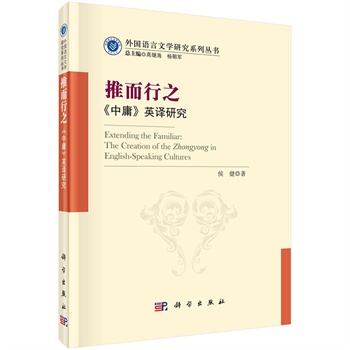
微信扫一扫,移动浏览光盘
简介
目录
Contents
丛书序
前言
Chapter One Introduction
1.1 Research Background
1.2 Research Topic and Research Questions
1.3 The Significance of the Research
1.4 Methodological Considerations
1.5 Creation as the Primary Object of Study
1.6 Procedural Considerations
Chapter Two From "Extending" to "Extending theFamiliar"
2.1 Deriving a Methodology from the Zhongyong
2.1.1 The Relationship Between Philosophy and TranslationStudies
2.1.2 Differences Between Western Philosophy and ClassicalConfucian Philosophy
2.1.3 The Three Features of Classical Confucian Philosophy
2.2 An Introduction to the Zhongyong
2.2.1 The Reasons for Choosing the Zhongyong
2.2.2 The Context of the Zhongyong
2.2.3 The Text of the Zhongyong
2.3 The Way to Read the Zhongyong
2.3.1 Learning from the Zhongyong
2.3.2 Accessing the Zhongyong from the Analects
2.4 Taking the Way from the Analects to the Zhongyong
2.4.1 "Extending" in the Analects
2.4.2 "Extending the Familiar" in the Zhongyong
2.5 "Extending the Familiar" and the Study of Translation
2.5.1 The Trouble with Translation Studies
2.5.2 "Extending the Familiar": A Subject-Oriented Approach
2.6 Summary
Chapter Three Extending Christian Monotheism
3.1 James Legge: the Missionary and Scholar
3.2 Discovering God in Confucianism
3.3 Extending Christian Monotheism in Legge's Translations
3.3.1 Extending Christian Monotheism Aggressively
3.3.2 Extending Christian Monotheism Sympathetically
3.4 Gu Hongming's Response
3.4.1 Gu Hongming as a Cultural Amphibian
3.4.2 Extending the Religion of Good-Citizenship Proudly
3.5 Summary
Chapter Four Extending the Two-Wheel Pattern
4.1 Two Predecessors
4.1.1 Lyall and King's The Centre, The Common
4.1.2 Hughes's The Mean-in-Action
4.2 Wing-tsit Chan and His Translation of the Zhongyong
4.2.1 Wing-tsit Chan and A Source Book in Chinese Philosophy
4.2.2 Discovering the Two-Wheel Pattern in the ConfucianTradition
4.2.3 Extending the Two-Wheel Pattern Objectively
4.2.4 The Zhongyong as a Metaphysical Work
4.3 Summary
Chapter Five Extending Process-Relational Thought
5.1 Ames and Hall's Collaborative Work
5.2 Discovering Process-Relational Thought in ClassicalChinese Philosophy
5.2.1 Hall's Critiques of the Dominant Tradition in WesternPhilosophy
5.2.2 Hall and Ames's Studies in Comparative Philosophy
5.3 Extending Process-Relational Thought Responsibly
5.3.1 From the Language of Substance to the Language of Focusand Field
5.3.2 The Central Argument
5.3.3 Shendu (慎独)
5.3.4 Zhongyong (中庸)
5.3.5 Cheng (诚)
5.4 The Chinese Way of Transcendence
5.5 Andrew Plaks's Translation of the Zhongyong
5.6 Summary
Chapter Six The Translation/Creation of theZhongyong
6.1 The Zhongyong: Translatable or Untranslatable?
6.2 Translation as Phenomenological and HistoricalCreation
6.2.1 The Phenomenological Creation
6.2.2 The Historical Creation
6.3 Cheng (诚) as the Translation Criterion
6.4 Summary
Chapter Seven Conclusion
References
- 名称
- 类型
- 大小
光盘服务联系方式: 020-38250260 客服QQ:4006604884
云图客服:
用户发送的提问,这种方式就需要有位在线客服来回答用户的问题,这种 就属于对话式的,问题是这种提问是否需要用户登录才能提问


